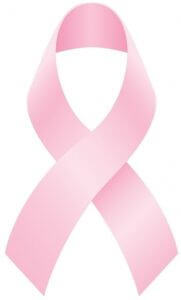Support the Early Detection of Breast Cancer

Each October, the National Breast Cancer Foundation, Inc.® (NBCF) uses Breast Cancer Awareness Month to increase awareness of the disease. This annual campaign encourages people to take the steps toward early detection of breast cancer. ComboInk.com is proud to be donating proceeds of sales this month to NBCF.
What Are the Signs of Breast Cancer?
Healthcare providers urge all adult women to perform monthly breast self-exams. If you find some of the symptoms below, please contact your doctor to schedule an appointment.
- Skin changes, such as dimpling, redness, swelling, or pitting that resembles the skin of an orange
- Change in breast size or shape over a short period of time and especially if on one side only
- Lumps or nodes felt in the breast or in underarm area
- Nipple turned slightly inward or inverted
- Nipple discharge other than breast milkNipple tenderness or flaking
- Irritated or itchy breasts
- Changes in touch, such as feeling hard, tender, or warm
- General pain in any part of the breast
How Does My Doctor Check for Breast Cancer?
Once you reach a certain age or if you have a family history of breast cancer, you’ll begin visiting your doctor regularly for clinical breast exams and mammograms. A clinical exam involves your doctor checking the appearance of your breasts, nipples, and armpits and feeling for any abnormalities.
Having lumpy tissue, known as fibrocystic breasts, is not an indicator of breast cancer. In fact, fibrocystic breasts are normal, with more than half of women experiencing fibrocystic breast changes at some point.
A suspicious lump is usually small, roughly the size of a pea. If one is discovered, your doctor will look at its size, shape, and texture and see if it moves easily. Soft, smooth, round, and movable lumps are likely to be benign tumors or cysts. A hard, oddly shaped lump that feels firmly attached within the breast is more likely to be cancer. But your healthcare provider will perform further diagnostic tests to determine if you have cancer.
Women 40 and older should have mammograms every one or two years. Those younger with risk factors for breast cancer may be required to have mammograms as well. Mammograms often show a breast lump before it can be felt. As with the clinical breast exam, your doctor may carry out additional tests to see if abnormal cells are present.
How Can I Prevent Breast Cancer?
Unfortunately, there is no one factor to prevent breast cancer. Breast cancer, like all cancer, arises due to environmental factors and genetics.
Genetic testing of the BRCA1 and BRCA2 genes is available now although not always covered by health insurance. If you have inherited these genes, you have options for managing your risk.
There are also other ways to reduce your risk of breast cancer. NBCF recommends the following healthy habits.
- Maintain a healthy weight
- Stay physically active
- Eat a balanced diet mainly of fruits and vegetables
- Do not smoke
- Limit alcohol consumption
Print in Pink This Month
For all of October, ComboInk is donating 2% of sales to NBCF. All you have to do is use promo code 8CURE at checkout. You’ll also save 8% on your entire order. In addition, use the #PrintInPink hashtag on Twitter and Facebook to share your stories.
Please visit the NBCF website to donate or learn more about their Early Detection Plan.
